So now that you know it’s a good idea to exfoliate, let’s talk about how to do it.
Chemical Exfoliation
Many of you are probably familiar with mechanical exfoliation, such as a scrub. The kind with rough or small particles that you rub over your face and rinse off with water. Or a pumice stone that you use to scrape off dry, flaky skin from your feet. Or a brush, like a handheld brush or Clarisonic device, that buffs away skin.
Chemical exfoliation is a different method. Rather than scrubbing, scraping, or buffing off dead skin, chemicals dissolve dead skin cells or break up the bonds or glue holding them together, which loosens the cells and allows them to shed faster.
A Chemical Exfoliant Is More Effective Than A Scrub or Brush
Chemical exfoliation is MORE EFFECTIVE than mechanical exfoliation, because it produces more shedding of dead skin and reaches deeper into the skin. A scrub or brush only treats skin superficially (the outermost layer of skin). The results are considerably smaller – you don’t see much of a difference in your skin’s appearance afterward – and the results are very short-lived.
What you do get with a scrub is a sense of cleanliness. Many people, especially men, enjoy using a scrub, as the scrubbing action makes them ‘feel clean.’ It’s more of a psychological benefit.
But if you want to exfoliate effectively and get better results, you’ll need to use a chemical exfoliant. Chemical exfoliation produces much more radiant and smooth skin.
There are different types of chemical exfoliants. Today I’ll go over the major ingredients – acids, enzymes, and other chemicals.
Types of Chemical Exfoliants
A. ACIDS
Acids work by breaking the weak bonds linking skin cells, causing the rapid shedding of skin cells in the Stratum Corneum (outer layer of the epidermis). As the AHA works deeper into the epidermis, it stimulates the production of new skin cells (cell turnover).
AHA’s also increase the lipid content in your skin, which translates to a stronger barrier function. (Strong barrier is always good!) It is during cell renewal that natural barrier lipids are produced.
Alpha Hydroxy Acids
Alpha Hydroxy Acids, commonly known as AHA’s, are mild acids that primarily come from plant sources. But many AHA’s today are made synthetically due to high demand. They are the most common acids used in skin care.
AHA’s are best for thick, photo-damaged skin, dry, dull skin, or oily, acne-prone skin.
- glycolic acid (derived from sugar cane) – strongest but most irritating, not suitable for sensitive skin
- lactic acid (derived from milk) – a good alternative because less irritating than glycolic acid; also hydrating and brightening; increases the skin’s natural GAG’s and ceramides
Fruit & Plant Acids
Fruit Acids are derived from.. you guessed it, fruits! These are commonly grouped together with AHA’s (and called an AHA), but technically speaking, in chemistry terms, they are not an Alpha Hydroxy Acid.
- mandelic acid (derived from bitter almonds) – excellent for treating blemishes
- malic acid (derived from green apples & grapes)
- tartaric acid (derived from grapes)
- citric acid (derived from citrus fruits)
- azelaic acid (derived from wheat & rye) – helps minimize pigmentation (tyrosinase-inhibitor)
- kojic acid (derived from soy & rice) – helps minimize pigmentation (tyrosinase-inhibitor)
Beta Hydroxy Acids
Beta Hydroxy Acids (BHA) are similar to AHA’s except they are oil-soluble (whereas AHA’s are water-soluble). Being oil-soluble means they are oil-loving.
This makes it good for skin with blemishes or blackheads. A BHA can get through an oil ‘plug’ in pores and exfoliate inside the pores, removing the build-up of dead skin cells and debris.
Salicylic Acid is the most common BHA. It is found in virtually every acne line and in many exfoliants.
- salicylic acid – also has natural anti-bacterial and anti-inflammatory properties, and suppresses oil production
- derivatives of salicylic acid – esters and salts of salicylic acid, these are ingredients whose names end in ‘salicylate‘
- natural alternatives – willowherb, sweet birch, wintergreen
Polyhydroxy Acids
Polyhydroxy Acids are more gentle relatives of AHA’s, which are good for sensitive skin or people with atopic dermatitis (eczema) or rosacea.
They are also strong humectants, which means they can hydrate skin in addition to exfoliate it.
- lactobionic acid
- gluconolactone
B. ENZYMES
Enzymes work in a different manner from acids. They are chemicals that digest proteins. Dead skin cells in the Stratum Corneum are composed of the protein keratin, the same protein in your hair, and these dead cells are held together by protein linkages too.
Enzymes have an immediate effect, since the proteins are digested right away. Enzymes are more gentle than AHA’s because they are not acidic, and they can only digest the proteins that they come into contact with. Enzymes therefore do not penetrate as deeply as acids.
They are typically found in cleansers, peels, or masks, because enzymes require water to be activated.
- Papain (from papaya)
- Bromelain (from pineapple)
- Protease enzymes, e.g. Pepsin (from bacteria)
C. OTHER EXFOLIATING AGENTS
Some ingredients are not technically considered exfoliants but have natural ‘exfoliating’ effects, such as Retinol and Vitamin C.
Retinol does not exfoliate skin, but it does stimulate cell turnover (new skin cell production) in the deeper layers of skin.
My Favorite Chemical Exfoliants
While I use a range of exfoliating ingredients, my personal favorites are:
- Enzymes (for giving my face a very ‘fresh’ look and brightening my skin a few shades)
- Mandelic Acid (for keeping pores clear)
- Polyhydroxy acids (for super hydrating my skin)
Different Methods of Chemical Exfoliation
There are many ways to go about exfoliating your skin. Exfoliating ingredients are included in many types of skin care products these days, not just in a product labeled an ‘exfoliant‘ or ‘exfoliator.’ For example, they’re found in many cleansers, moisturizers, and serums.
But many options also make things complicated! And difficult! Quite often, we may not want an exfoliating ingredient in our moisturizer, if for example, we already have a separate exfoliant. Too much exfoliating is not good for skin (see the risks of over-exfoliating).
Let’s look at some different ways you can exfoliate:
Exfoliating At Home On Your Own
Chemical Exfoliants:
- cleanser containing AHA’s or abrasive particles
- serum with AHA’s
- moisturizer with AHA’s
- at-home peel or mask with AHA’s or enzymes
- spot treatment product containing AHA’s or Salicylic Acid
- wipe or towelette with AHA’s
Mechanical Exfoliants:
- electrical, sonic cleansing brush (e.g. Clarisonic)
- simple, non-electric cleansing brush
- hand glove or towel specially designed to exfoliate gently
For AHA’s, look for a 8-10% AHA concentration for the face, and up to 15% for the body. The ideal pH should be around 3.5. A lower pH will irritate skin, and a higher pH will work less effectively.
Getting Exfoliated By A Professional
Getting exfoliated by a professional (esthetician or doctor) gives you much better results than exfoliating with products you can buy at the store.
At the spa or doctor’s office, professional-level products are used. They are stronger and penetrate deeper into the skin. Professional exfoliation products are never sold to consumers.
Types of Professional Exfoliation
- chemical exfoliation during a spa facial – a professional strength exfoliant is applied to skin (higher concentration of acid, lower pH). Examples: AHA’s, Salicylic Acid, enzymes
- microdermabrasion, dermaplaning, or ultrasonic handheld device used in a spa facial – instruments lightly remove skin from the Stratum Corneum only, so they are low risk
- deep chemical peel – uses caustic chemical agents that are much stronger and more aggressive than AHAs and enzymes. These go below the Stratum Corneum into the epidermis or dermis. Examples: TCA, Jessner, phenol, Baker Gordon
- dermabrasion (not the same as microdermabrasion) or ablative lasers in a medispa or doctor’s office – these methods go deep (into the dermis) and carry high risks
Chemical Peel
The word ‘chemical peel’ is a loosely defined term in the beauty industry. You see it all the time on spa service menus and products sold to consumers.
But this term is confusing because it can mean different things.
Broadly speaking, a Chemical Peel is an accelerated form of exfoliation. It can be mild to severe. A mild peel speeds up the sloughing of skin. In contrast, a deep peel actually destroys skin cells and causes inflammation (in order to create a brand new layer of skin).
A peel can affect just the Stratum Corneum (outermost layer of skin). Or it can penetrate all the way into the Dermis. (The dermis lies below the epidermis. See Layers of Skin.)
The peel products that you buy at the store (meant for consumers) only affect the Stratum Corneum. These are not really peels even if the word ‘peel’ appears in the name of the product.
A true peel is one that you get at the doctor’s office, medispa, or spa. What’s the difference? The DEPTH of the peel.
What matters in chemical peels is the depth at which a peel works – how far into the skin does it penetrate?
Chemical Exfoliation by an Esthetician (Spa or Medispa)
- Estheticians only work on the epidermis. They are not allowed to work on living tissue (the dermis layer).
- This means that exfoliation is restricted to certain ingredients, a minimum pH threshhold (generally must be over pH 3.0), a maximum percent concentration (generally must be under 30%).
- What an esthetician can or cannot do is determined by state law (the State Board of Cosmetology). There are no national laws or national guidelines.
Chemical Peel by a Dermatologist (Doctor’s Office or Medispa)
- Doctors are allowed to work on living tissue (affect the dermis layer).
- But in many states, an esthetician under the supervision of a doctor may perform a peel that affects the dermis. However, the doctor does not necessarily need to be present in the office. In some states, remote supervision is ok! Needless to say, regulation in the U.S. is very loose and varies from state to state.
- Doctors can use the strongest chemical peel agents – e.g. glycolic acid over 70%, TCA above 30%, AHA over 30%. These are extremely caustic, come with high risk, and can cause permanent damage to skin (e.g. changes in pigmentation and scarring). Be aware that a peel can go very wrong if not done correctly!
- A deep peel often causes peeling and may come with pain. Skin will look red and raw. Recovery can take up to several months, and there is always some risk of infection during the recovery process.
How to Decide What’s Best For You
Hopefully, you’re not overwhelmed by the above options, but if you are, rest assured. You are not alone. There are many different ways to exfoliate, and there is no one correct method.
Unfortunately, I cannot present all the different ways because there are just too many.
A meaningful recommendation would require a skin analysis of your skin type & current skin conditions, your lifestyle (how much time you have), and what products you are using in your routine.
But here are some questions to guide you:
- Are you willing to apply a weekly at-home peel and wait 10-15 minutes while it works on your face? This is the most effective way to exfoliate but it takes time and discipline to do this on a regular basis.
- Or would you rather just get it over with in the shower? Then you can use an AHA cleanser or a facial scrub. This is super easy and ideal if you have a low maintenance routine. But it won’t work as well as a peel or mask.
- Some exfoliants come in pads that you wipe on after cleansing and use several times a week. You might find this easier.
- You could also just use a night moisturizer or a serum with an AHA. That doesn’t require any work. It works on your skin while you sleep. It can be as effective as a peel or mask if formulated well.
- Or would you rather have someone else exfoliate for you? Then I recommend visiting an esthetician for a monthly facial. A professional-level exfoliation once every 4-6 weeks is a great way to maintain skin if you can afford it.
Whatever method you choose, it’s a good idea to exfoliate from to time. Remember that as we age, we all need assistance in removing excess dead skin cells. Chemical exfoliation will instantly improve the radiance and texture of skin.
Further Reading:
- Exfoliation Part 1: Benefits & Methods
- Exfoliation Part 3: Risks and Precautions
- Exfoliation Part 4: Finer Points
Cover Photo – Ingredients that are used in exfoliants. From top to bottom, left to right:
1. Papaya – papain (enzyme)
2. Pineapple – bromelain (enzyme)
3. Sugar Cane – glycolic acid
4. Milk – lactic acid
5. Citrus fruits – citric acid
6. Green apples – malic acid
7. Grapes – tartaric acid
7. Bitter almonds – mandelic acid
8. Willowherb – salicylic acid




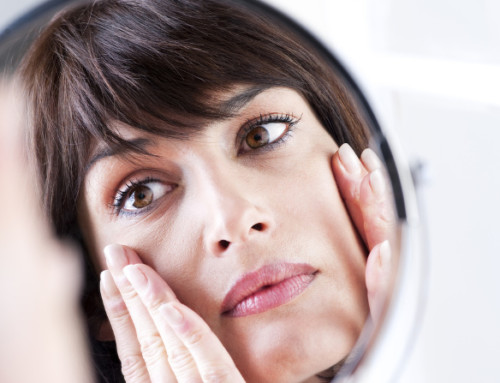

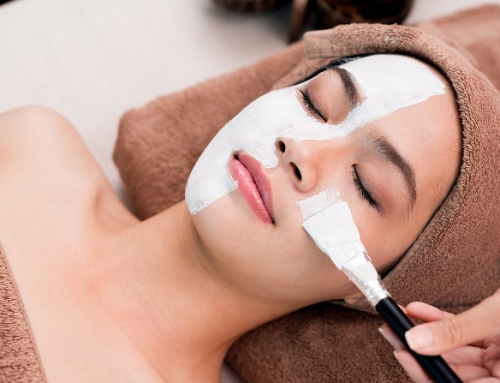

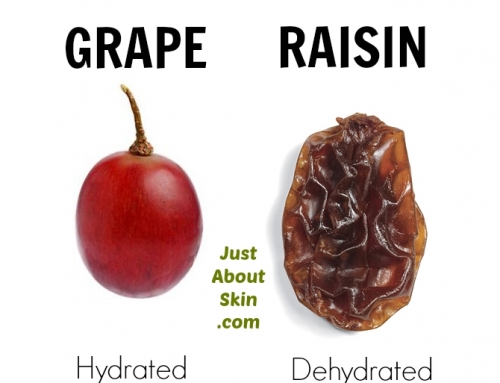

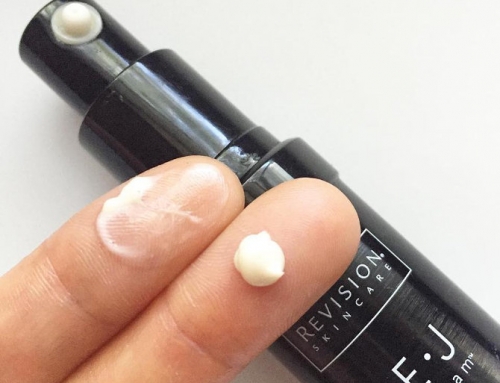
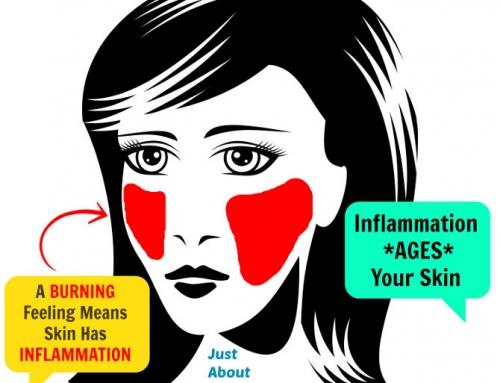
Love your blog- it’s extremely helpful. I was given your information by patricia who has a youtube makeup channel. I was so inspired by her skincare videos to take better care of my skin. I just purchased the dermalogica microfoliant- I plan to use this to wash my face at night. What are your thoughts on this product? thanks so much 🙂
Thank you very much! It’s nice to know you found me through Patricia’s YouTube.
Daily Microfoliant is a good exfoliant for you. Since you have acne, the Salicylic Acid in it will help clear pores.
If you have a more severe case of acne, another Dermalogica exfoliant is Gentle Cream Exfoliant. This has SA too, but also Sulfur, which will kill acne bacteria. It’s a leave-on, cream-based exfoliant that you rinse off after 10-15 min.
Daily Micro is a powder that foams up with water, which you rinse off after massaging for a minute.
Two different textures. A matter of preference, though Gentle Cream is a more effective treatment for acne.
Can you help me come up with a regime that is good for me and that will work? I am 53. I have sensitive skin. I have milia, which is deeply imbedded on my cheeks. You can’t see them but if you touch my skin you can feel them. I have tried a combination of retinA and glycolic acid for years to remove/prevent new milia. I think that is what cause more milia. So I used retinA on it’s own and then decided to just forget the retinA because I could not find sunscreen that would not make me break out. So now I still have the deeply imbedded milia, that can only be surgically removed, and pigmentation for not using sunscreen when I was using strong products. At this point I just want to exfoliate properly and remove the pigmentation that I have caused. I am middle eastern so maybe my skin might be thicker than Caucasian skin. Please advise. Thank you.
Hello Susie,
I appreciate your challenge to deal with both the milia and hyperpigmentation. Neither is easy to treat in general. But together, it poses a greater challenge. Because there are several things going on in your skin, this is a complex question that I cannot answer simply or quickly here, unfortunately. Helping you construct a new routine or optimize your current one is actually a service that I provide in a private consultation. In the ideal scenario, I would look at your skin in person. However, I can help you virtually (Skype, phone, email) too. (Contact me here).
If this is not feasible for you, my best advice is to disregard the milia for now. As you noted, stubborn cases can only be removed surgically anyway. Focus on the hyperpigmentation by using brightening products throughout your routine (not just one product). And, VERY IMPORTANT, you need to get back to using sunscreen. All your efforts to remove the HP will go to waste if you’re not using sunscreen. I know it’s very hard to find one that won’t break you out. But if you can invest the time to try different ones and not give up, it will be very worthwhile.
Also, if possible, consider getting a professional peel in a medical spa. Professional-strength exfoliation will help you much faster. When you go, they will also give you professional strength products for you to use at home in between visits. For dark hyperpigmentation, you will most likely need multiple visits over a period of a few months.